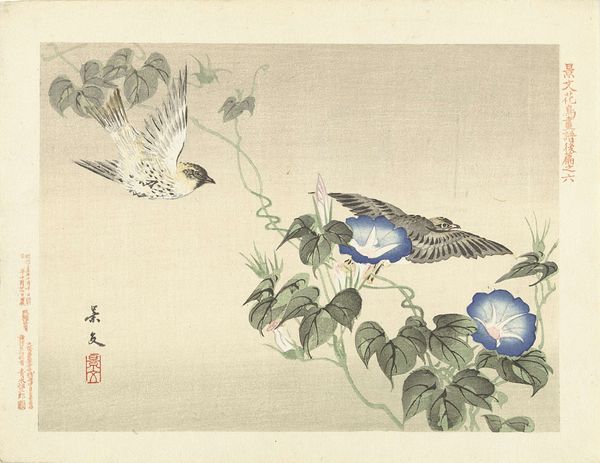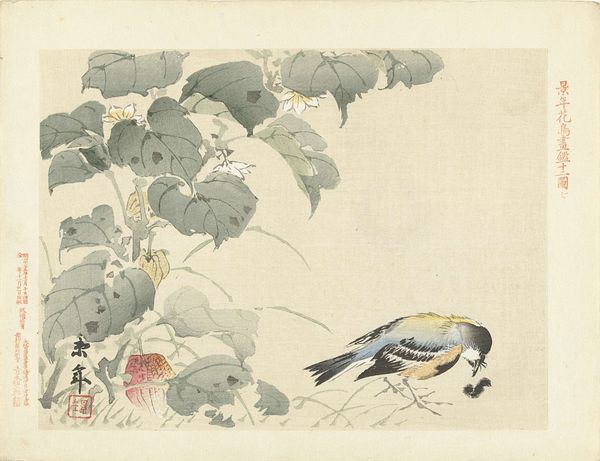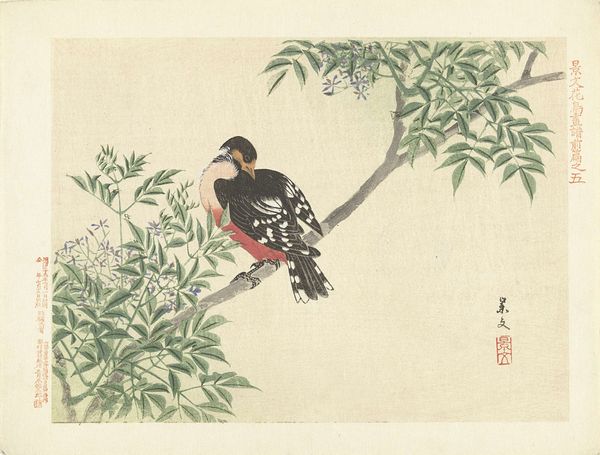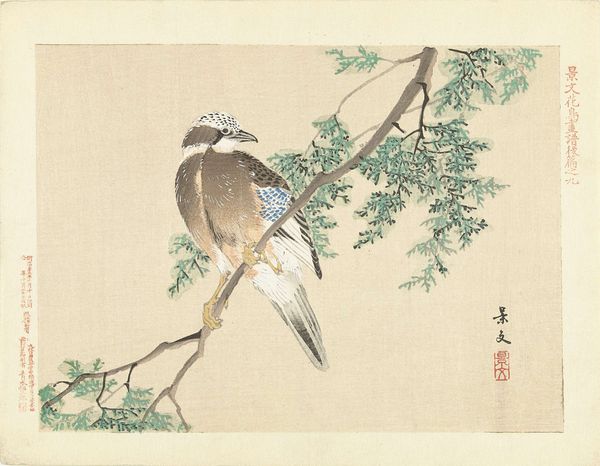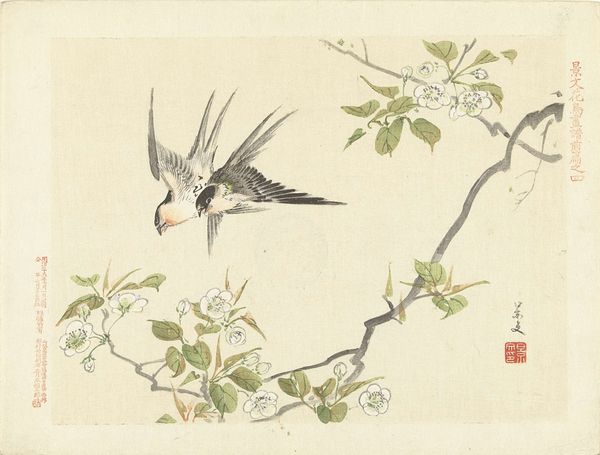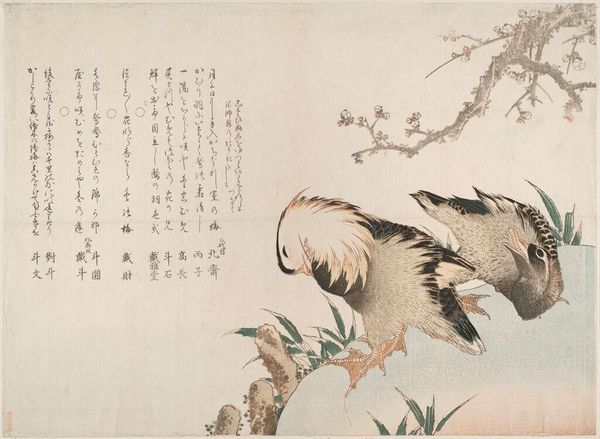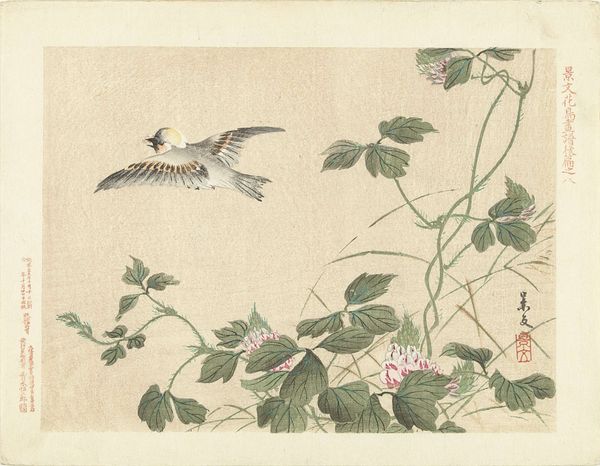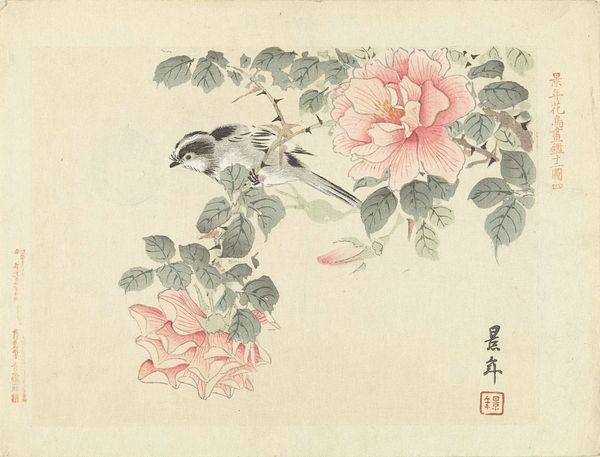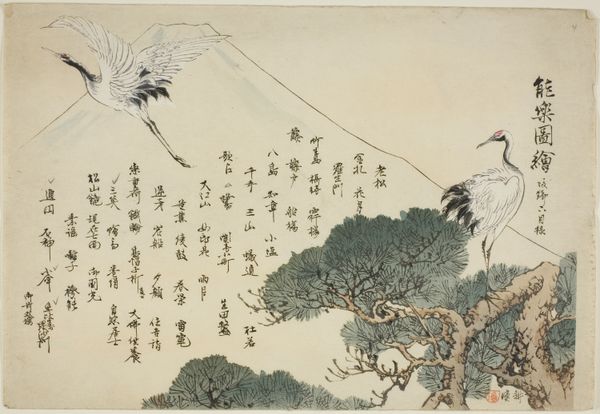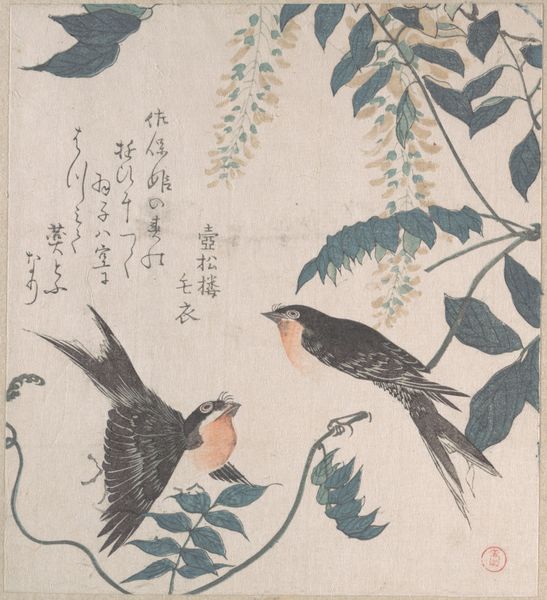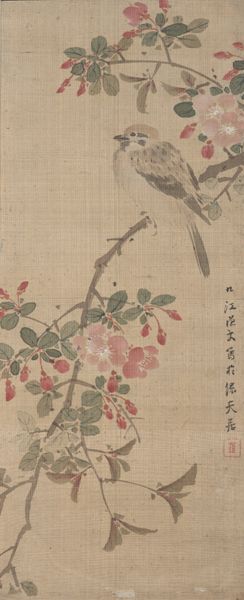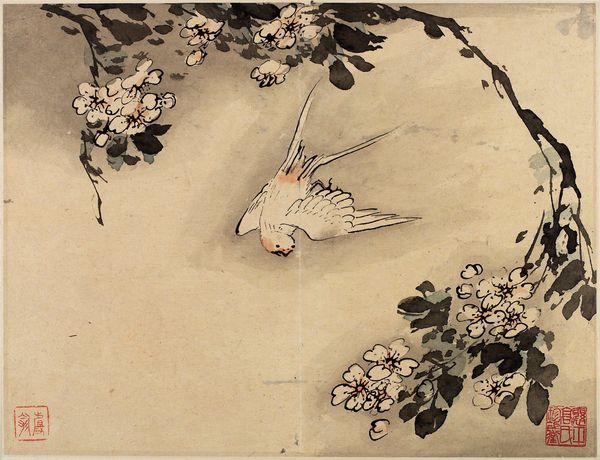
Dimensions: height 210 mm, width 269 mm
Copyright: Rijks Museum: Open Domain
Curator: Welcome to the Rijksmuseum. Today we'll be looking at "Bird and Red Vine" created between 1893 and 1894 by Kōno Bairei. It employs mixed media including watercolor. Editor: It strikes me as incredibly delicate; a moment suspended in time, captured in soft washes. The bird appears to be taking flight. Curator: Bairei was pivotal in Meiji-era artistic circles; championing traditional Japanese painting while understanding western art's influence. It’s a synthesis reflected in this very print, an echo of Ukiyo-e sensibilities through the lens of Japonisme. Think about the materials, woodblocks meticulously carved to produce the gradations of color. Editor: Precisely. There is a tangible link between nature and artisan, from gathering pigment to carving blocks, the transformation through labor. Even the choice of a bird, something living freely in nature. It all embodies a return to handcrafted work, resisting industrial uniformity. How does the rising tide of nationalism figure here? Curator: Critically, the bird becomes more than an aesthetic motif, its very existence an affirmation of Japanese identity, a nuanced dialogue on national pride versus western influence. There’s a simultaneous honoring of established artistic language with new modes of representation. Editor: And who is this artwork for? This tension is so pertinent; what conversations did Bairei hope to stimulate amongst different viewers during the period? It must have fostered some important tensions regarding artistic and cultural worth. Curator: It brings up interesting issues of class, who could afford such meticulously crafted pieces, also gender and social hierarchies; did men and women read different messages into an image of a bird taking flight? Considering this piece within the broader cultural narrative prompts so many essential questions. Editor: Examining these material conditions and sociopolitical contexts allows for greater access and dialogue, a means for critically reassessing cultural standards that continue to influence present artistic consumption. Thank you. Curator: It opens an interesting historical and contemporary inquiry and also a sense of self, identity and value when experiencing artwork within ever shifting contexts.
Comments
No comments
Be the first to comment and join the conversation on the ultimate creative platform.
